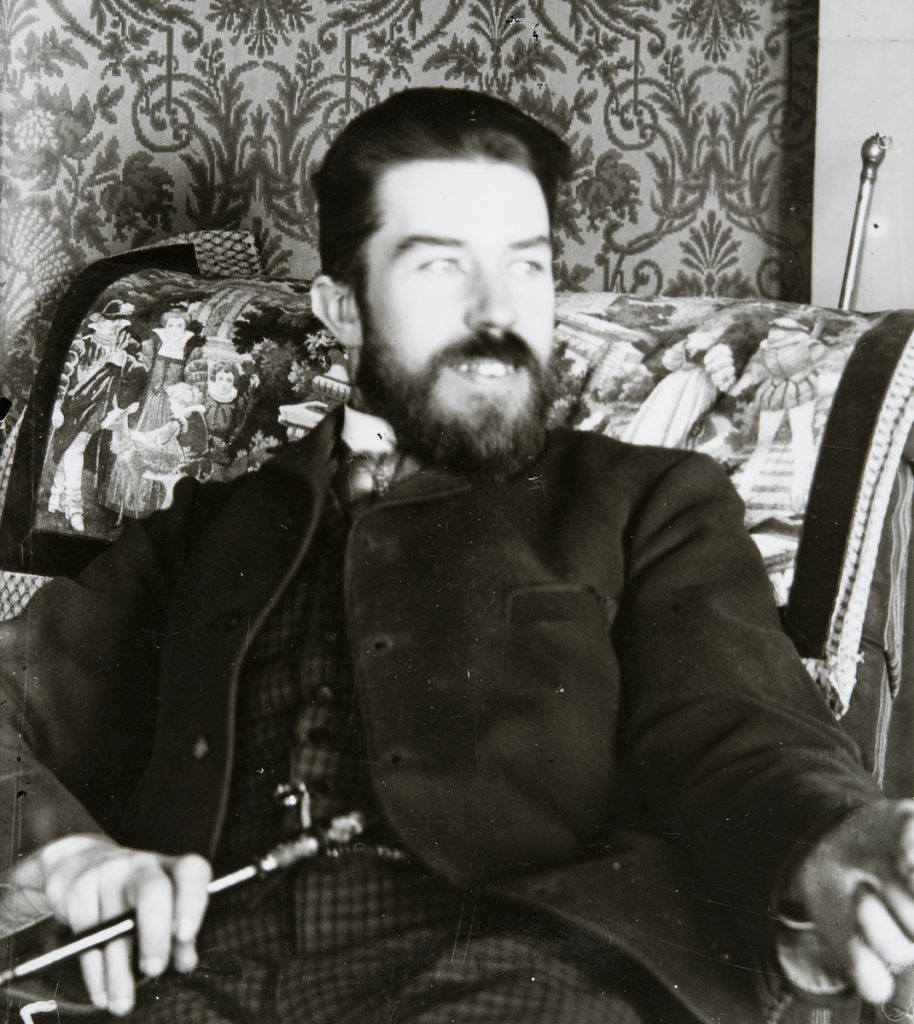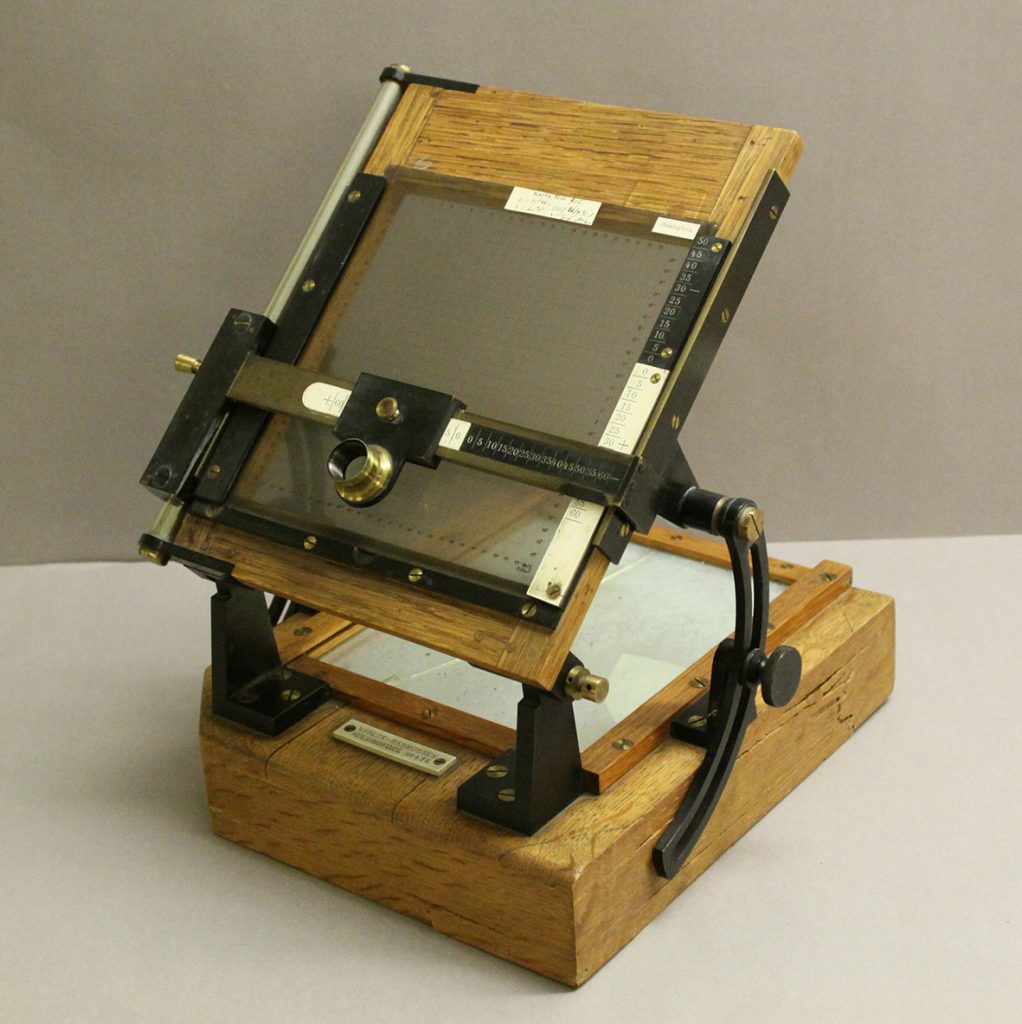Our object of the month is an arithmometer, or a calculator, which dates back to the 1880s. The metal device included in the Observatory’s collections has a 16-digit row displaying the results of calculations. The lever in the middle of the device is used to select the current operation, and the values to be calculated are entered using eight vertical input sliders. Each slider goes from zero to nine, with a crank handle on the right-hand side to confirm the values given.

This arithmometer originates in Glashütte, the state of Saxony, known as the hub of the German watchmaking industry. After the unification of Germany in 1871, the Germans were eager to demonstrate their competencies as a united state. At the time, industrially manufactured calculators were available only in France, putting the pride of Germans to the test. It couldn’t be helped – they had to start building their own calculating machines. The device was manufactured by a company known as Strasser & Rohde, founded in 1875 by watchmaker Ludwig Strasser and mechanic Gustav Rohde. The company’s main products included chronometers, pendulum clocks, technical machinery, precision tools and arithmometers.
What was the arithmometer used for?
Unfortunately, no specific information remains on the use of this arithmometer, but assumptions can be made on the basis of its age. From the beginning of 1883, the professor of astronomy at the Helsinki Observatory was Anders Severin Donner, who in the period 1883–1888 published studies on, among other topics, eclipses, comets, minor planets and star occultations. The work included positioning and timing as well as the identification of orbit shapes, for which Donner may well have used the arithmometer.

On the basis of the arithmometer’s age, it can also be assumed that it was used in the international Carte du Ciel project, which was aimed at mapping and cataloguing the sky with the help of photographs. A large double refractor was purchased and installed in the backyard of the Helsinki Observatory, with a tower constructed for its protection. The double refractor was used to photograph the night sky on glass plates, calculating the coordinates of stars from the images for the catalogue.

19th century digital technology!
Arithmometers are, perhaps surprisingly, digital devices. Their digital nature stems from the Latin word ‘digitus’, which means finger, and calculations can easily be carried out using your fingers. In actuality, ‘digital’ denotes the limits of available characters. For many, digital brings to mind binary numbers, or bits, usually denoted by zero or one. However, digital is not necessarily binary; for example, text is digital information, as it is formed within the limits of a certain set of characters. Usually references to digital are made in connection with computers and electronic devices, particularly when information from the surrounding world is converted into a binary format, such as digital audio or photographs. A limited number of symbols are also available in the arithmometer, making it a digital calculator in spite of being a mechanical device.
This object is on display in our museum’s new core exhibition, now open in the University of Helsinki Main Building.
Saara Seppälä, Customer Advisor
Translation: University of Helsinki Language Services.
Sources:
Strasser und Rohde. https://www.rechnerlexikon.de/artikel/Strasser_und_Rohde. Accessed 20 December 2023.
Strasser & Rohde 1875–1918. https://www.glashuetteuhren.de/die-uhrenfabriken/strasser-rohde-von-1875-1917/#LITL. Accessed 20 December 2023.
Rechenmaschinenfertigung in Glashütte. https://www.rechnerlexikon.de/artikel/Rechenmaschinenfertigung_in_Glash%C3%BCtte. Accessed 20 December 2023.
Digital data. https://en.wikipedia.org/wiki/Digital_data. Accessed 20 December 2023.
Markkanen Tapio, Linnaluoto Seppo & Poutanen Markku (1984): Tähtitieteen vaiheita Helsingin yliopistossa.
